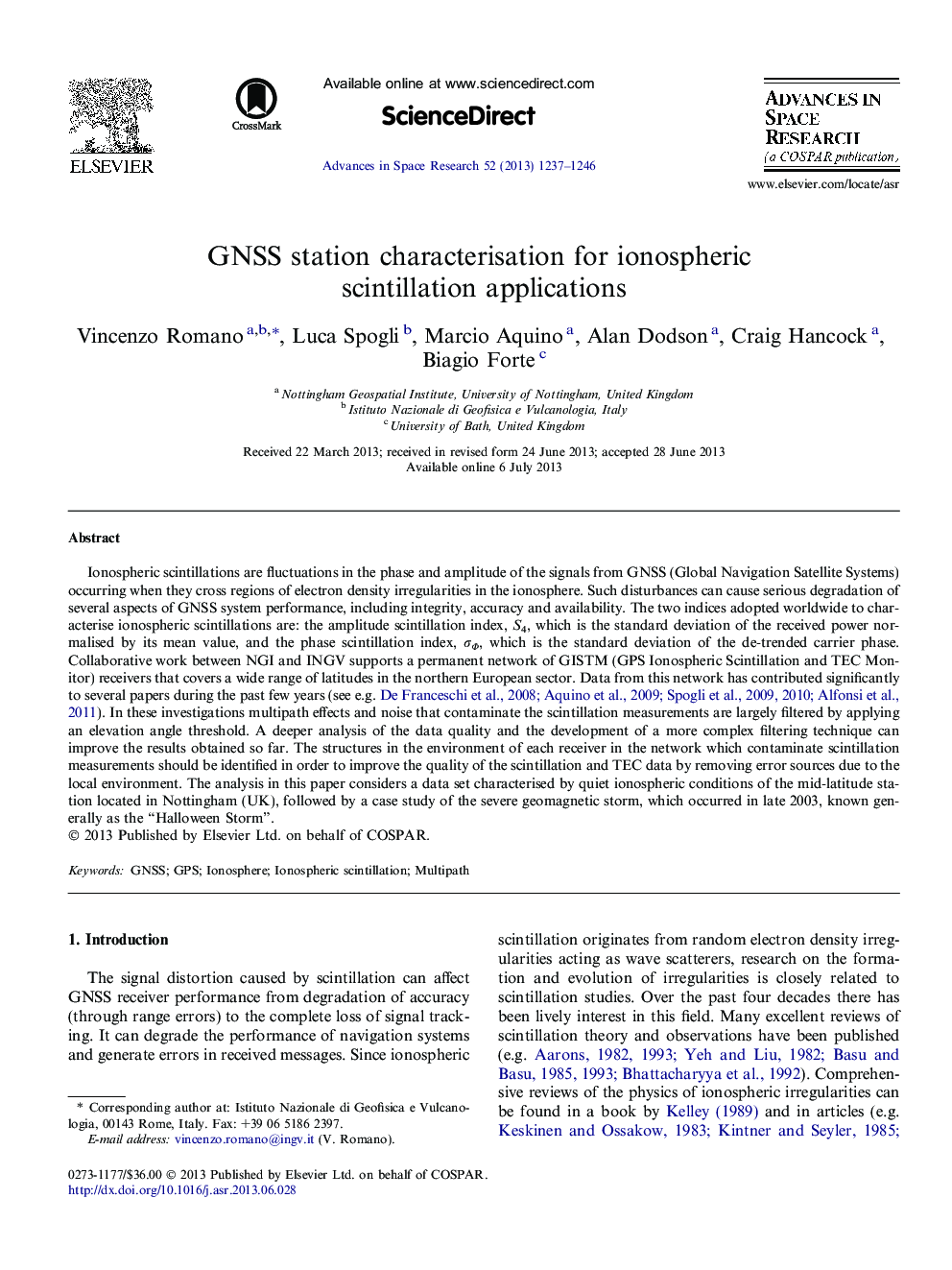| کد مقاله | کد نشریه | سال انتشار | مقاله انگلیسی | نسخه تمام متن |
|---|---|---|---|---|
| 1764508 | 1020059 | 2013 | 10 صفحه PDF | دانلود رایگان |

• Investigation on multipath effects and noise that contaminate the scintillation measurements.
• Station characterisation to improve the observation capability of GNSS receivers.
• Method for improving the quality of data for studies in scintillation climatology and mitigation.
Ionospheric scintillations are fluctuations in the phase and amplitude of the signals from GNSS (Global Navigation Satellite Systems) occurring when they cross regions of electron density irregularities in the ionosphere. Such disturbances can cause serious degradation of several aspects of GNSS system performance, including integrity, accuracy and availability. The two indices adopted worldwide to characterise ionospheric scintillations are: the amplitude scintillation index, S4, which is the standard deviation of the received power normalised by its mean value, and the phase scintillation index, σΦ, which is the standard deviation of the de-trended carrier phase. Collaborative work between NGI and INGV supports a permanent network of GISTM (GPS Ionospheric Scintillation and TEC Monitor) receivers that covers a wide range of latitudes in the northern European sector. Data from this network has contributed significantly to several papers during the past few years (see e.g. De Franceschi et al., 2008, Aquino et al., 2009, Spogli et al., 2009, Spogli et al., 2010 and Alfonsi et al., 2011). In these investigations multipath effects and noise that contaminate the scintillation measurements are largely filtered by applying an elevation angle threshold. A deeper analysis of the data quality and the development of a more complex filtering technique can improve the results obtained so far. The structures in the environment of each receiver in the network which contaminate scintillation measurements should be identified in order to improve the quality of the scintillation and TEC data by removing error sources due to the local environment. The analysis in this paper considers a data set characterised by quiet ionospheric conditions of the mid-latitude station located in Nottingham (UK), followed by a case study of the severe geomagnetic storm, which occurred in late 2003, known generally as the “Halloween Storm”.
Journal: Advances in Space Research - Volume 52, Issue 7, 1 October 2013, Pages 1237–1246